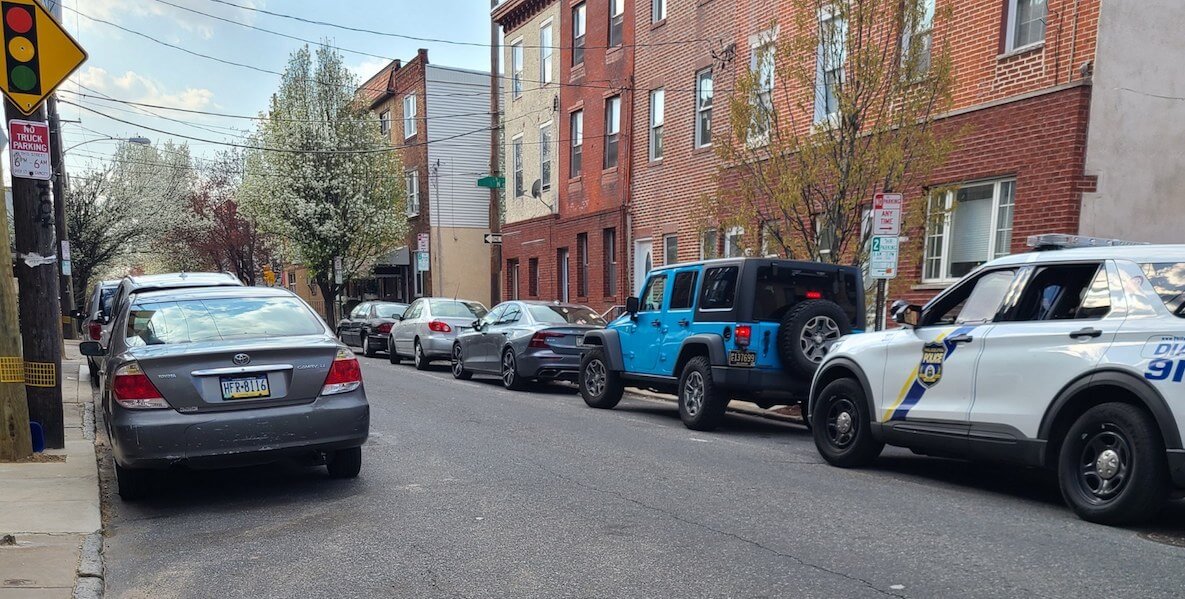Just four days before Election Day, 3,400 names were released by the Philadelphia City Commissioner notifying voters that their mail-in ballots had been rejected. Mistakes like writing an incorrect date on the ballot or forgetting to enclose the document in a secrecy envelope landed voters’ names on the long list of those affected.
Voters whose mail-ins were clocked for trivial issues had just three days, Sunday, November 6, Monday, November 7, and Election Day itself, to head to City Hall and fill out a replacement ballot.
I followed a 75-year-old woman whose ballot was flagged for having issues with the date as she trekked from her home in Southwest Philly to Center City to rectify her tiny voting error. On Sunday, her block captain and neighbor told her that her name was on the City’s long list. This wasn’t her first rodeo, either: J., as we’ll call her, revealed her mail-in ballot for a previous election had also been flagged for a similar reason, and that her experience obtaining a replacement was incredibly tedious.
She described long lines and inefficiency. We hoped that the process would run more smoothly this time. Here’s how our wishes came true …
STEPS TO OBTAIN AND CAST A REPLACEMENT BALLOT — aka “CURE” A BALLOT
- Head to City Hall.
- As we approached the building’s South Apron, someone immediately approached, asked if we needed help voting, guided us inside City Hall, and thanked us for coming.
- Employees inside — most of whom were masked — asked J. to fill out a Replacement Ballot Request Form and offered us a seat at a foldout table with pens and “I voted” stickers. (I refrained from stuffing handfuls of them in my backpack.)
- After the form was complete, an employee told us to take the form to Room 140, just down the hall.
- There was a two-person line of people to get into room 140. We waited about five minutes until we were waved in. This was the longest line J. and I encountered throughout the entire process. No complaints.
- Inside were three booths, each with an assistant. The room was decked out in American flags of varying shapes and sizes.
- We sat at the available booth and the employee asked if J. knew what it was about her ballot that was incorrect. We said it had something to do with the date. The employee politely explained that some people get confused and sometimes put their own date of birth (instead of the current date). She asked for J.’s identification, typed on her computer, and created the new ballot. The software she was using lagged at times, but a blank ballot was created within 10 minutes of us sitting down.
- After printing out a new ballot, the employee showed us where on the ballot the issue may have arisen, pointing out a box designated for the current date. She also told us what to write in the other boxes on the outside of the ballot (she did not, to be clear, tell us how to vote). She was very clear and patient.
- We were then directed towards a long row of makeshift podiums in the hallway to fill out the new ballot.
- J. spent about 10 minutes filling out the replacement ballot at a podium that shielded her on three sides.
- Once finished, we looked for a dropbox. There were multiple in the hall, clearly labeled with signs. We located one in under one minute. All done!
Time Spent: 30 minutes
Result: City Hall must have revamped its replacement ballot process recently, because we were in and out of the building within the hour with no issues. The annoying part was just having to go there in the first place.
Takeaways: Requiring people who sent absentee ballots to come in-person to City Hall on short notice in order for their vote to be counted is voter suppression at work.
Mail-in voters send in absentee ballots for many reasons, like not being Philadelphia on Election Day, having a disability that makes going to a polling place in person difficult — or just because it’s a voter’s right to do so. But what if you’re out of town? Students who attend college outside of Philly, for example, would not be able to come back in time to correct the trivial errors issues that could invalidate their ballot. J. and I were lucky to be just a 15-minute drive away, but who knows how many of the 3,400 voters with faulty mail-ins were actually able to make it to City Hall in time?
At least the process once we got there was, in our experience, pretty seamless. It’s the least the City could do.
Lightning Bolt Rating: 3 out of 5 (The process was seamless, even pleasant, but two bolts off because we shouldn’t have had to deal with it in the first place.)
![]()
MORE ADVENTURES IN VOTING IN PHILADELPHIA
Philadelphia City Hall. Photo by Theo Wyss-Flamm.






